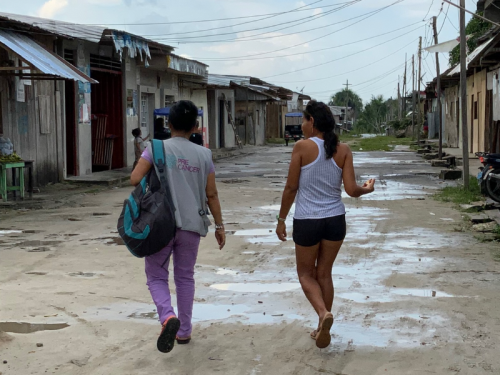Research in Peru demonstrates that stigma hinders cervical cancer prevention

Cervical cancer, a preventable disease through vaccination and early detection and management, faces a significant hurdle due to entrenched stigma associated with Human Papillomavirus (HPV) and cervical cancer, according to a recent study published by Dr. Valerie Paz Soldan, associate professor of tropical medicine and infectious disease at the Tulane University School of Public Health and Tropical Medicine.
During the implementation of Proyecto Precancer, an implementation science project that implemented an HPV-based screen-and-treat strategy in the Peruvian Amazon rainforest city of Iquitos, researchers on Paz Soldan’s team noticed that some health care professionals and authorities, as well as documents on the subject, used stigmatizing messages. For example, one health professional stated in a conversation that “easy women get it,” referring to cervical cancer, and a book published in Iquitos was titled “HPV: the virus of infidelity”.
Such messages prompted the research team to investigate the perceptions and attitudes surrounding HPV and cervical cancer. They conducted semi-structured interviews with health professionals and focus groups with women diagnosed with cervical precancer or cancer, observed counseling between health professionals and women, and reviewed policy and health promotion documents. The Socio-Ecological Model, which considers health and health behaviors as the result of an interplay between individuals, relationships (i.e, family/friends), community, and societal factors, was employed to organize the analysis, revealing critical insights into the multi-layered dimensions of stigma.
The findings, published in BMC Public Health, identified three main themes perpetuating stigma in the community: the notion that women are to blame for their HPV infection, often characterized as easy or promiscuous; the implication that men are responsible for women's HPV infections due to perceived carelessness or unfaithfulness; and the overall perception that HPV is shameful, embarrassing, and should be concealed from others. These themes manifested at various levels, from individual and relationship dynamics to community-wide perceptions among healthcare staff, and even societal aspects within cervical cancer guidelines and male chauvinism.
One striking consequence noted was that some women refrained from getting screened for HPV due to the associated stigma or, if HPV was detected or cervical cancer was diagnosed, women felt the need to hide this from others. The study emphasized the need for early detection of cervical cancer and treatment programs to address this pervasive stigma throughout the healthcare system and community. Without tackling these deeply rooted beliefs, the successful implementation and scaling-up of new programs remain at risk.
The research team concluded that interventions to combat stigma should incorporate messages emphasizing that HPV infections are very common in sexually active individuals, that most individuals eliminate this virus, but that for others, an HPV infection may remain latent for many years or even decades. One can acquire HPV from one partner and at any age. Hence, the most important behavior for cervical cancer prevention, aside from receiving the HPV vaccination, is routine screening. By shifting the focus away from attributing HPV acquisition solely to sexual behavior, the research suggests promoting screening and treatment as paramount preventative measures. Such interventions, the study argues, could contribute to breaking down barriers and encouraging more individuals to participate in cervical cancer prevention programs.
Paz Soldan highlighted the urgency of addressing stigma, stating, "Our findings underscore the critical need for targeted interventions to dismantle the stigma surrounding HPV and cervical cancer. Only by fostering understanding and acceptance can we ensure the success and sustainability of prevention programs in these vulnerable communities."
As the global health community strives to make cervical cancer a disease of the past, tackling societal attitudes and stigma emerges as a crucial frontier in the battle against this preventable form of cancer.
“’Easy women get it’: pre-existing stigma associated with HPV and cervical cancer in a low-resource setting prior to implementation of an HPV screen-and-treat program” appeared in the December 2 issue of the journal.
